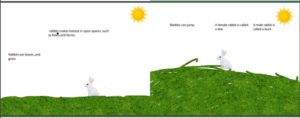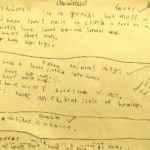With the changing face of the education sector, some educators are working in the direction of adopting and altering their learning strategies as well as their learning spaces to provide their learners with a conducive environment to develop and grow holistically.
Keeping this in mind, I have tried out an alternative method to assessment criteria which enables the learners to exercise their own agency and freedom by creating criteria for assessment for themselves, making them active subjects in the entire process than passive ones.
The new era has been redefining the whole paradigm of education, where teachers are no longer a sage on the stage but a guide on the side. The reflective, imaginative practitioners are giving away the controls and melting hierarchies for collaborative and student-led classrooms.
Students perform better when they can make their own choices and act as partners in carving their own classroom practices and processes. With the above thought in mind, I set out to explore the possibilities of letting first graders create their own assessment criteria. Though as a teacher I had my own apprehensions, it was still an inquiry worth trying – ‘Children design their own process and assessment criteria’.
This year while inquiring into the human impact on habitats, under the transdisciplinary theme, ‘Sharing the Planet’, I encouraged my learners to engage in thoughtful reflections about the different ways in which they can display their understanding of habitats.
The first graders came up with many ways of presenting their understanding such as illustrations, write-ups, posters or using a book creator app, etc. They further discussed the success criteria and contemplated the information which will make their presentation impactful:
- choosing an animal
- sharing details about the habitat of their animal and some interesting facts about that animal
- organizing the results neatly with powerful pictures
- inquiring further about the animal by asking experts or reading about that animal in books or researching about that animal on Kiddle (a search engine that my students often use to research)
My reflections of the entire journey helped me to realize how my students had identified all the important aspects of the topic while brainstorming and developing the success criteria, and how we had so easily included key elements of the PYP curriculum.
- By sharing what the habitat of an animal is we focused on concepts: form and knowledge
- By organizing work neatly with powerful pictures and finding interesting facts about that animal: we focused on the approaches to learning: organizational and research skills
- By presenting learning through illustrations/writing/technology: we were communicators expressing themselves in different ways – learner profile
- Information on Squirrels
- Information on Squirrels
The process further empowered students with the capacity to self-assess their work. As they decided a piece of work:
- meeting all the above parameters would earn them 4 stars
- meeting some would earn 3 stars
- meeting a few details would mean two stars
- meeting only one aspect would earn one star
As I look back at my own experiment, I witnessed each child:
- take the onus of contributing and working towards creating a success criterion for the task
- have the inclusion of their thoughts lead to goal-directed learning where the students were focused and motivated while participating in the task
- demonstrate highly engaged participation, as they continued working for more than half of the day to match up to the expectations that they had set for themselves
- become self-directed learners who kept a track of all the elements in the tool by striking off the criteria they had met
- show reflective process which helped them see what went well and what was the way forward to their learning.
This entire exercise was a great learning curve for myself and my students. As a grade 1 community, we were able to take a leap of faith to realize the true potential of our students. In my opinion, as PYP teachers, we become risk-takers and often challenge ourselves to measure our ability and that of our learners by experimenting in class. The results of these experiments turn out to be fruitful for both the educators and the students, just like this new experience of co-creating the assessment tools ended up sharpening my learners and my own skills.
Sandeep Kaur is a PYP Coordinator at Heritage International Xperiental School, Gurugram. She is a keen learner and an inquirer who is always excited to learn new things, and then apply them in day-to-day situations. Sandeep tends to focus on the larger picture and believes in doing her bit as a global citizen by inspiring her students and building life-long learners.





No comments yet.